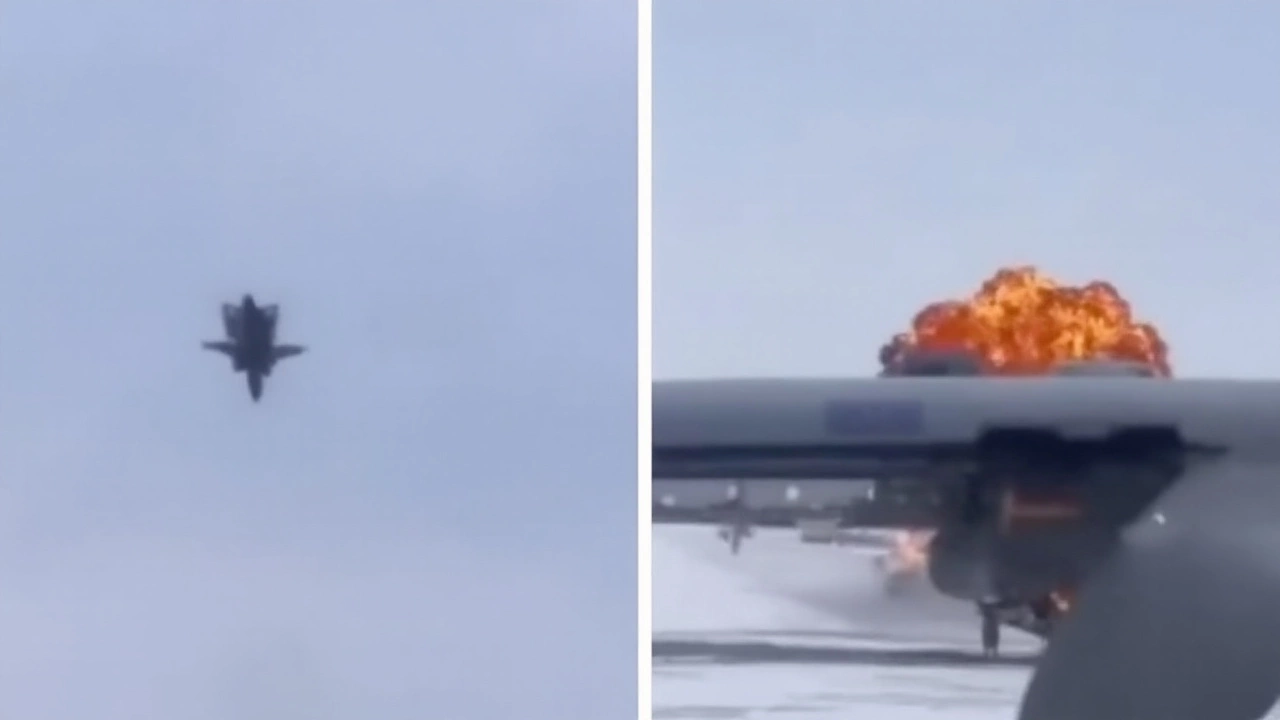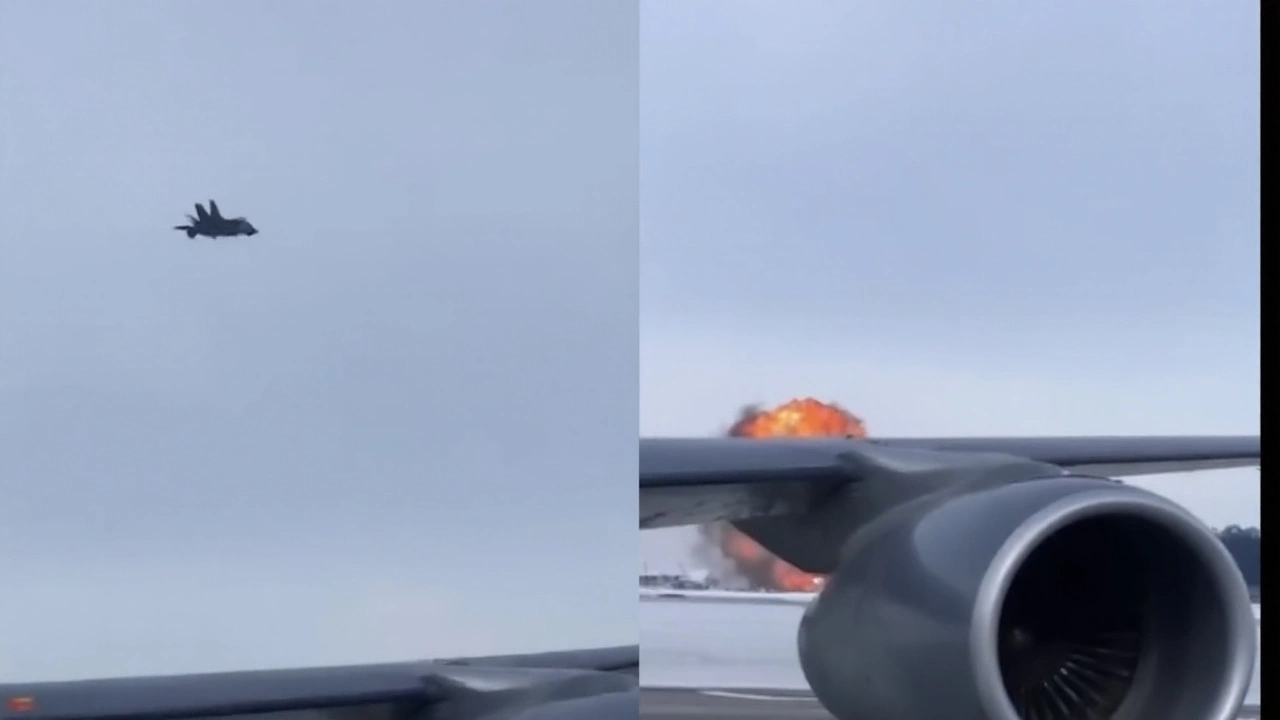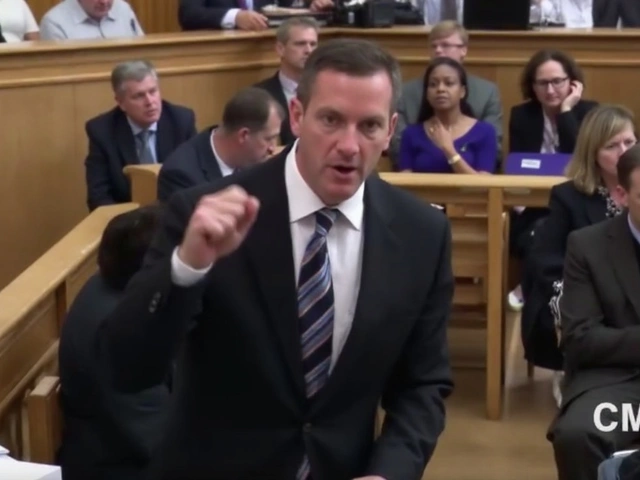
For 50 minutes, an F-35A pilot circled Eielson Air Force Base in Alaska with a crippled jet, talking in real time to Lockheed Martin engineers and trying to save a $196.5 million aircraft. The call didn’t fix the problem. The pilot punched out, the jet slammed into the runway, and the fireball lit up social media. He survived with minor injuries. The Air Force says the chain of events began with something that should never have been in the airplane at all: water inside the hydraulic system.
The Air Force Accident Investigation Board (AIB) released a 39-page report laying out what went wrong and why. It reads like a checklist of how tiny maintenance lapses can snowball into a major loss. Hydraulic fluid contaminated with water froze in bitter cold, jammed the landing gear, tricked onboard sensors, complicated the pilot’s options, and led to a total loss of the jet on January 28, 2025. Nine days later, a second jet at the same base faced a similar icing issue but managed to land safely, underscoring this wasn’t a one-off anomaly.
What happened over Eielson AFB
The sortie began as a routine training mission. Shortly after takeoff, the pilot tried to retract the landing gear and saw the first hint of trouble. The gear didn’t behave normally. When he commanded the gear back down, the nose gear didn’t recenter—locking at an angle to the left. That skewed nose wheel turned a simple return-to-base into a high-stakes troubleshooting session.
The misaligned gear set off a cascade of side effects. The jet’s “Weight on Wheels” sensors, which tell the aircraft whether it’s on the ground or airborne, began misreading the situation. The airplane was in the air, but some systems thought it was not. That mismatch can change how certain functions behave, adding stress and uncertainty to every move the pilot makes while he’s trying to get a complex machine back on the ground in one piece.
With temperatures at -1°F (-17°C) around the base and much colder aloft, ice was a real threat—inside and out. The pilot set up near Eielson and opened an emergency conference line to Lockheed Martin’s engineering team. Five engineers joined. For roughly 50 minutes, they worked through procedures to try to recenter the nose gear and clear the fault, while the pilot flew patterns overhead.
During the call, the pilot made two touch-and-go attempts. Those are calculated tests: briefly touch down to see whether the jet tracks straight, then go airborne again if it doesn’t feel right. With a canted nose wheel and confused Weight on Wheels logic, the risk is obvious—a sudden yaw, a veer, or a collapse could rip the jet sideways or off the runway. Both passes failed to deliver a stable outcome.
Eventually, the pilot did what fighter pilots train for but hope they never do. He ejected. Parachute deployed. He came down on base and was taken to Bassett Army Community Hospital in Fairbanks with minor injuries. Emergency responders reached the fireball in about a minute. Debris stayed within the airfield boundary.
The Air Force later noted the loss as one of its most expensive single-aircraft mishaps in recent memory. And the video of the impact, viewed millions of times, fueled immediate questions: Why was the pilot attempting touch-and-goes with a misaligned nose gear? Why keep trying for almost an hour? Where were the guardrails in procedure and engineering oversight?
Complicating the picture, another F-35 at Eielson experienced a similar hydraulic icing problem just nine days later. That jet landed safely. The common thread forced a tougher look at maintenance practices, cold-weather procedures, and the decision-making flow when engineers are advising a pilot in real time.

What the investigation found and what’s next
The AIB’s root cause is blunt: water in the hydraulic system. Post-crash analysis found that roughly one-third of the hydraulic “fluid” on board was actually water. In sub-zero conditions, that water froze and blocked the pathways that control the nose and main landing gear. Ice in the hydraulics meant valves and actuators didn’t move as commanded. With the nose gear stuck off-center, the airplane’s ground-sensing logic was also thrown off, compounding the pilot’s problem set.
Water should never be present in aircraft hydraulics. The reasons are basic physics and common sense. Hydraulic systems rely on incompressible fluid to transmit force. Add water, and you add a contaminant that can corrode components, degrade seals, and—crucially in Alaska—freeze into solid blockage. Investigators flagged “hydraulic fluid maintenance programs” as a contributing factor, a bureaucratic way of saying the system that is supposed to keep moisture out didn’t do its job.
How does water get in? There are a few typical pathways: improperly sealed containers, servicing carts that aren’t dried and purged, lines opened too long in humid conditions, or fluid handling that doesn’t follow the book. The report does not single out one technician or one act; it calls out the program. That suggests gaps in oversight, documentation, or the frequency and rigor of fluid testing.
On that point, fluid sampling and moisture testing exist for a reason. Aviation maintenance commonly uses chemical tests to detect very small amounts of water in hydraulic fluids. When the sample is off-spec, you flush and replace the fluid, inspect the system, and quarantine suspect ground equipment. In Alaska, where a winter cold snap can punish any residual moisture, that discipline matters even more.
The investigation also scrutinized the human side. While the pilot was airborne, the Lockheed engineers discussed a 2024 maintenance update relevant to gear issues, according to the AIB. Yet they didn’t formally reference it in their live guidance. The board wrote that if the team had followed the updated guidance, “they likely would have advised a planned full stop landing or a controlled ejection instead of a second touch-and-go attempt.” That’s a diplomatic way of saying the decision-making tree during the call didn’t track the latest playbook.
Touch-and-goes are legitimate tools, but they assume the system is in a condition where a brief touchdown can yield a clean data point with manageable risk. A skewed nose wheel changes the math. On touchdown, it can yank the jet off centerline, scrub rubber, and induce forces the airplane isn’t built to tolerate for long. Combine that with confused ground-sensing logic, and you’re playing with a thin margin.
The AIB lists “crew decision making” alongside maintenance program shortfalls as contributors. That phrase isn’t a rebuke; it’s a signal to examine how pilots, maintainers, and engineers share information under pressure. Who has the authority to call off a test pass? How quickly do advisors escalate to “land now” or “eject now”? Are the right technical orders and bulletins at people’s fingertips when they’re talking to a pilot who has seconds, not hours?
The timing is awkward for the service. Just weeks before the crash, Air Force Chief of Staff Gen. David Allvin had launched a force-wide push on safety. Cold-weather operations were always going to be part of that conversation. Eielson sits in interior Alaska, where -1°F at the surface means much colder temperatures at altitude. Freezing conditions don’t just ice wings; they can freeze anything that carries water—if that water is allowed in.
What happens now? The report doesn’t ground the fleet, but it does sharpen priorities. Expect aggressive fluid sampling across units that operate in cold climates, fresh looks at hydraulic servicing carts and storage, and stricter moisture controls—simple steps like desiccant breathers, airtight seals, and shorter exposure times when lines are opened. Equally important are the paperwork and training pieces: making sure every shop is following the same spec, and that “good enough” never becomes the norm in how fluids are handled.
On the operations side, the Air Force and contractor teams are likely to tighten the rules of the road for live troubleshooting. That means clearer checklists for remote engineering calls, mandatory references to current maintenance bulletins, and predefined decision gates. If a condition matches a known hazard pattern—like frozen gear hydraulics—advisors may be required to step down the risk ladder faster: one attempt to gather data, then commit to a full-stop landing if the runway and wind are favorable, or execute a controlled ejection if not.
There’s also the reality of cost and readiness. The F-35 program has logged hundreds of thousands of flight hours across variants, and mishaps remain statistically rare. But when a loss happens, it’s a budget shock. The destroyed jet in Alaska is valued at $196.5 million in the report, reflecting more than just a bare airframe. Beyond the price tag, the wing loses a tail it counts on for training, alert, and exercises. Replacing it takes years, not months.
The second event at Eielson—same base, similar hydraulic icing—matters for a different reason. It suggests the risk wasn’t isolated to one jet’s quirks. That aircraft landed safely, which tells you the underlying problem can be managed when the system and the team line up. The lesson is not just about hardware; it’s about process discipline in the cold, and about how fast decision-makers pivot when a known hazard surfaces.
For the pilot who ejected, the endgame was brutal but by the book. Modern ejection seats are designed to save lives across a wide speed and altitude range. He used the tool built for the worst day. The jet was lost; the aviator went home. That outcome stems from training done long before the flight, and from emergency crews who reached the fire within a minute.
Here are the key takeaways the Air Force and its contractors will be judged on in the months ahead:
- Eliminate water in hydraulics: tighten handling, storage, and sampling; purge and replace where needed.
- Codify cold-weather procedures: assume water can freeze anywhere it’s allowed in and plan maintenance around that.
- Fix the call flow: during live emergencies, force the team to consult current bulletins and follow predefined decision gates.
- Reassess risk tactics: limit touch-and-go testing when gear alignment and sensor logic don’t match reality.
- Share the lessons: the near-miss nine days later shows this is a wider issue; spread the fix fast across units.
None of this changes the visual shock of the video—a fifth-generation fighter breaking apart in a line of flame. But the paperwork behind it points to something less dramatic and more fixable: fluid handling, cold-weather prep, and a disciplined playbook when pilots reach out for help mid-flight. Those are unglamorous details. They’re also where big airplanes live or die.
As the service folds the investigation’s recommendations into daily life at Eielson and beyond, the benchmark will be simple. The next time a pilot calls in with frozen hydraulics, the team on the ground needs to recognize the pattern, open the right page, and make the hard call early. That’s how you prevent another F-35 crash from ending in a fireball.




